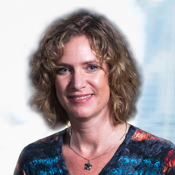Robynne Sisco, CFO of Workday, on R&D returns, culture, sales, profits

Robynne Sisco, CFO of Workday, has a background at large companies such as VMware, VeriSign and GE that know how to scale. Now Sisco is involved with scaling profits, culture, revenue and being the front woman as Workday develops its financial software, which is aimed at other CFOs.

Workday CFO Robynne Sisco
We caught up with Sisco to talk shop as well as how finance views the returns on research and development, sales people and Workday's somewhat quirky reporting structure.
Here's a look at the highlights:
Balance. Sisco said one of her biggest challenges--along with Workday's management team overall--is balancing growth, profits and investment. "How do you continue to grow, keep your culture and strengths in customer satisfaction?" said Sisco. "Now we need to think about profitability. And it's time to do that in a methodical way. If we wanted to be profitable we could simply do it by not hiring, but we don't believe that's in our long-term interest."
Culture. Of those balancing act items, Sisco said scaling up and keeping Workday's culture is what worries her the most. "The significant part of our employees have been here less than a year. More are two years," said Sisco. "How do you perpetuate culture. Every company faces that challenge as they cross the 5,000 person mark." Sisco said she will also interview anyone who is going to be a people manager. "It's important to not hire the wrong person. We want people who love a job that changes," said Sisco.
Return on research and development. "Our R&D time is spent on product, innovation and moving forward," she said. "We're focused on building out our suite and targeting industries. We're not dialing it back, but we're determining how much revenue we allow to fall to the bottom line. We have robust processes for prioritizing the product roadmap and have an advisory board." Sisco added that R&D will change over time as a percentage of revenue as Workday's suite is built out. The view of R&D is different at a company that specializes in multi-tenant SaaS infrastructure since there is continuous features being rolled out.
Reporting structure. Sisco reports to co-president Mark Peek, who used to be CFO. Peek has the business operations functions at Workday with Phil Wilmington, the other co-president, handling sales and customer operations. CEO Aneel Bhusri is focused on product development. The structure is a quirky one relative to other companies, but Sisco said decisions about forecasts and planning have the four of them at the table. "It's somewhat of an interesting structure, but it works well," she said.
Contracts with customers. The length of contracts with customers remains about three years, but there are a lot of variables. "We are seeing longer contracts from large customers, but they vary," said Sisco, who noted that how much cash comes from the customer upfront is a variable. "We're looking at the long term," said Sisco, referring to contract negotiations. She added that there are specific requests; for instance, one customer wanted to pay 2.5 years upfront because they had the cash flow at the time. The dream contract is a three-year deal with a balanced mix of cash and subscription. One thing that doesn't change with cloud companies is the traditional enterprise software seasonality. "We still have seasonality and the end of quarter push. I guess that's the way enterprise buying has always been done," said Sisco.
Acquisitions. "We operate on a single technology platform and don't buy companies and bolt them on," she said. "It's the best answer for our customers." Sisco said Workday has traditionally focused on acquisitions that are technology tuck-in deals where it's a straight build vs. buy decision.
ROI on a sales team. Workday is a bit different than other enterprise software vendors in that it is nearly 100 percent direct sales to customers. Sisco said "if customer satisfaction is important we don't want people in between." As for the sales return on investment, Workday looks at the cost to acquire a customer and the marketing and commissions associated with it. "If revenue is 2x cost you're in great shape. We're now 3x," she said. One big reason Workday is getting ROI on adding sales people is that it doesn't have churn. Losing customers and then replacing them complicates matters, she added.
IT spend. Peek is in charge of IT, but Sisco noted that most internal systems revolve around Workday's product. "We typically only want to use SaaS and products that are philosophically aligned," she said. "We also like doing business with our customers. Running Workday is one of the most important things we do." Indeed, Workday recently hired Diana McKenzie as CIO to grow the company's internal IT services team. McKenzie knows a bit about scaling up since she spent 12 years at Amgen and was an IT leader at Eli Lilly, another large company.
The CFO role. Sisco's role revolves around internal planning and forecasting as well as being front facing with other CFOs. Sisco's talks with other CFOs hit some product and also general issues in the field. After all, Workday Financials was influenced by the internal financial group. "We're the first to try something and show what's possible," she said.